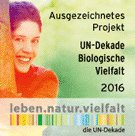An interpretive plan is a detailed profile either for a whole site – e. g. a protected area, a museum, a zoo or a botanical garden (interpretive master plan) – or selectively for an essential element of it – e. g. a visitor center, a permanent exhibition or a self-guided trail.
The following elements typically come into operation when developing our interpretive plans:
1. Workshop
We recommend to begin the development of an interpretive plan with our introductory planning workshop for interpretive design (link).
The venue is chosen with the client. If time is too restricted we also offer a short oral presentation of our conceptual approach instead.
The content of the workshop does not primarily focus on concrete results for the project. Rather the participants learn a shared methodology for the actual work on the interpretive plan.
Of course we strive to design the practical exercises as project-specific as possible. However, we know from experience that the likelihood of developing actual plans during an introductory workshop is small.
Furthermore, the introductory workshop offers your staff a step-by-step understanding of the later interpretive plan. It gives them a shared understanding of the interpretation and is amongst other things the foundation for process oriented evaluations and improvements in the future.
2. Planning Team
After the workshop at the latest the client should nominate a team of representatives for the site (ideally 3-4 in total). This team clarifies conceptual issues and ensures the accuracy of informational content. Ideally such a team consists of both
- representatives who actually conduct the interpretation on site currently and later during operation (practitioners)
- and representatives of the management who have an overall view of the site in their daily work (management)
Team member willingness and their constant attendance and active participation in the working group is very important. Besides creative ideas an interest in the development of basic structural considerations is of particular relevance.
A time commitment of 2-3 half to whole day meetings is required, in addition to phone, e-mail and mail communication.
3. Analysis
We require 1-3 days for a first general analysis of the field and its features, ideally before the workshop, otherwise afterwards. The support of a staff member with a good knowledge of place and subject matter has proven to be of great value.
4. Planning phase
During the final planning stage attractive, consistent, target-group-oriented experiences are developed. Besides determining meaningful content (‘Why would the visitor want to know this?”) this includes the development of the arrival experience (welcoming, orientation) and the on-site experience (esp. message, image, organizers, tools).
Everything is always carried out with the intended experience in mind.
On-site work includes the workshop, analysis, team meetings, and if applicable further, team independent, focused research.
5. Evaluation (Test Stage)
After an agreement on the central elements of the interpretive plan these are visualized (e.g. as a mock-up or illustration) and if desired are presented to potential visitors for feedback.
The exact evaluation tools (e.g. questionnaire, focus groups or interviews) have to be agreed upon between client and contractor.
6. Presentation
The number of requested final presentations and of people participating in the presentation, without being members of the planning team, should be communicated to us at least two weeks in advance to allow for adequate preparation.
7. Final Report
The interpretive plan consists of
- a detailed introduction and explanation of the contents
- illustrated recommendations for implementation, as well as
- possible architectural (interior) design work
- cost estimate for the entire project.
[sibling-pages depth=”1″ sort_column=”menu_order”]


